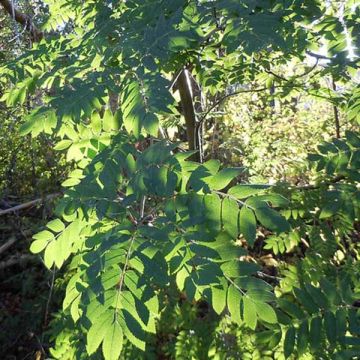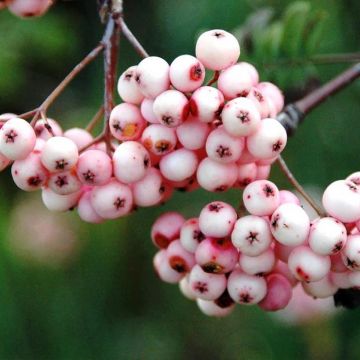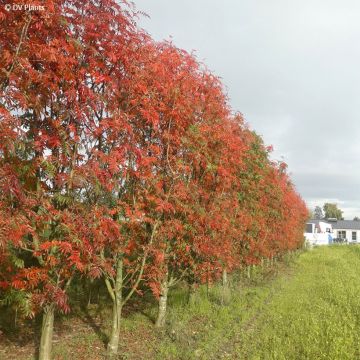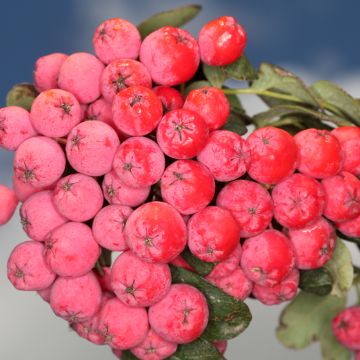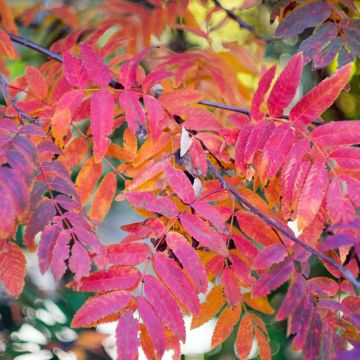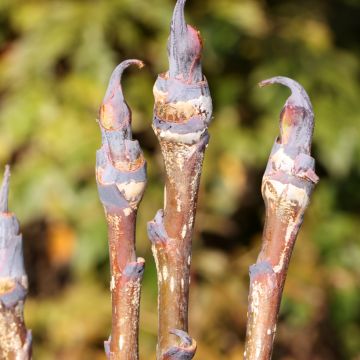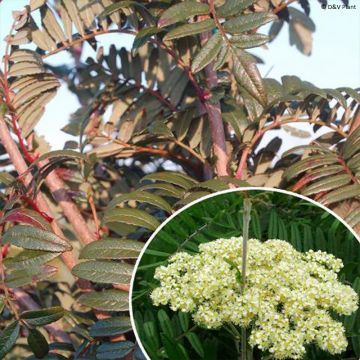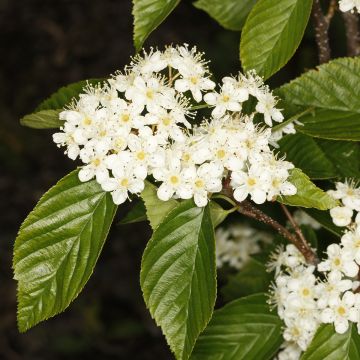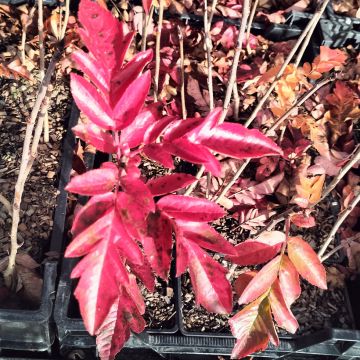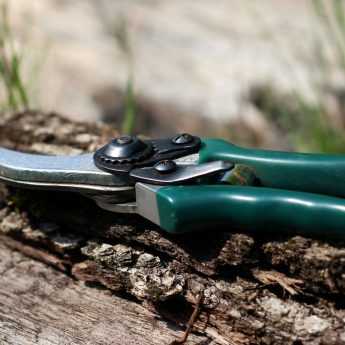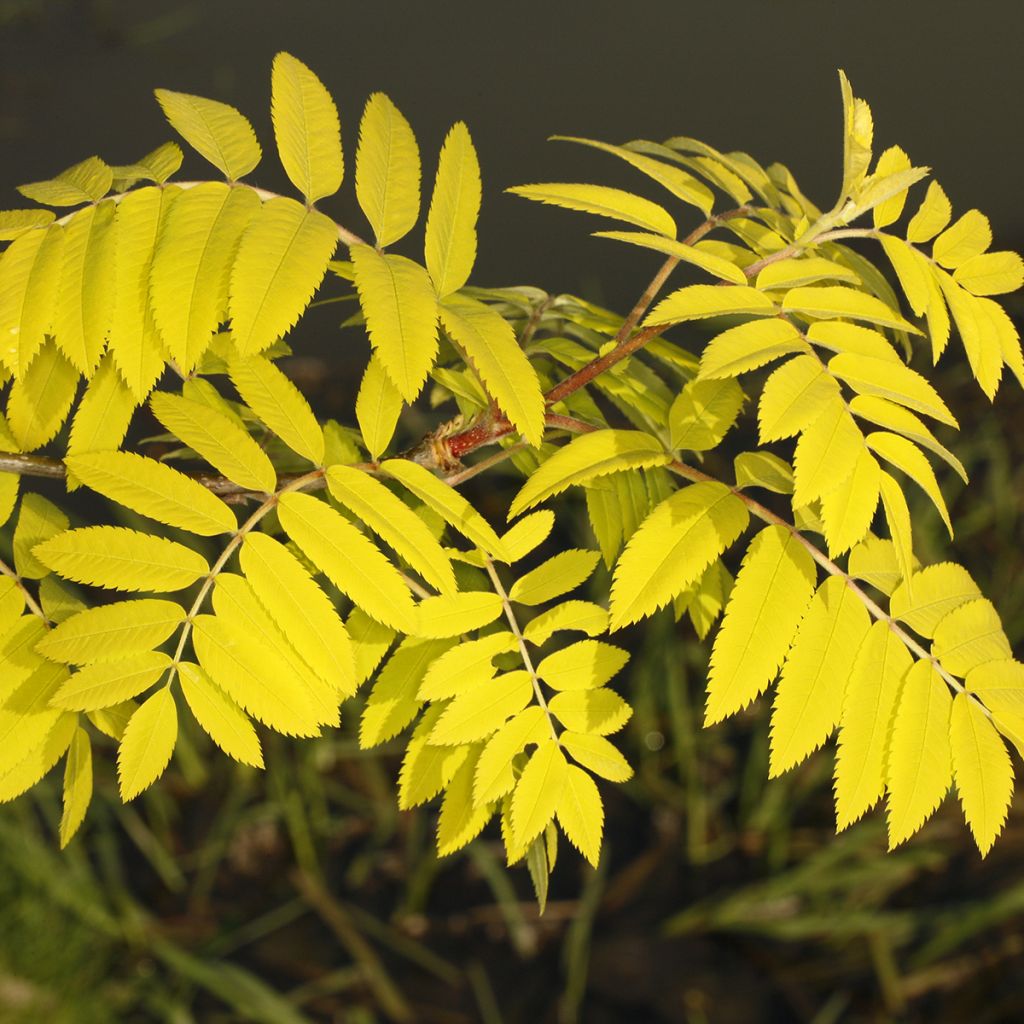

Sorbus aucuparia Dirkenii
Sorbus aucuparia Dirkenii
Sorbus aucuparia Dirkenii
Rowan, Mountain Ash
This item cannot be shipped to the selected country
Delivery charge from €6.90
More information
Delivery charge from €6.90
More information
Schedule delivery date,
and select date in basket
This plant carries a 24 months recovery warranty
More information
We guarantee the quality of our plants for a full growing cycle, and will replace at our expense any plant that fails to recover under normal climatic and planting conditions.
From €7.90 for pickup delivery and €6.90 for home delivery
Express home delivery from €8.90.
Does this plant fit my garden?
Set up your Plantfit profile →
Description
Sorbus aucuparia 'Dirkenii' is a cultivar of mountain ash with an upright habit and foliage beautifully shaded with yellow and bright green. It forms an erect tree that can reach a height of 5 to 8 metres. It displays the typical compound foliage of the species but in a very bright colour. It offers a beautiful autumn colouring in yellow or red. Its white flowering appears in spring, followed by red berries enjoyed by birds. It is very hardy and accommodating in terms of soil and climate.
The mountain ash is a tree that grows to about fifteen metres and in nature grows in hedges, roadside borders, or woodland edges. Its natural distribution range is immense as it covers a large part of Europe, Russia, temperate Asia and Japan. Its great hardiness and tolerance to many different natural conditions, whether in terms of soil or climate, explain this ability of the species to spread. In the countryside, its berries feed wild birds.
As a member of the large Rosaceae family, there are dozens of species, with Sorbus aucuparia being one of the most common.
'Dirkenii' was obtained by the Dutch nurseryman Dirken around 1880. It forms a small, harmonious tree that reaches about 5 to 8 metres in height at maturity. Its odd-pinnate foliage is composed of leaflets in bright green-to-yellow. The flowering in white umbels of about 14 cm in diameter appears around May-June and attracts bees. The flowers then give many clusters of very decorative, bright red fruits, 1 cm or more in diameter, which delight birds that feed on them until the end of the year. In autumn, the foliage takes on a yellow to red colour depending on the conditions.
This mountain ash should be planted in non-scorching sun in mild and rainy climates and in partial shade wherever the sun is more intense. It is not demanding in terms of soil and can thrive in poor soil without any problem. Similarly, moist to dry soils without excess will suit it.
This 'Dirkenii' mountain ash is suitable for small to medium-sized gardens, or even in large spaces alongside larger trees. A beautiful purple oak as a foliage contrast can serve as a valuable background. In a smaller garden or planted in a mixed bed, it can be associated with shrubs such as Cotinus 'Royal Purple' whose purple foliage also enhances it. Shrubs with decorative berries of various colours for a cocktail of colours like Callicarpa or Symphoricarpos brighten up the whole during the winter period.
Plant habit
Flowering
Foliage
Botanical data
Sorbus
aucuparia
Dirkenii
Rosaceae
Rowan, Mountain Ash
Cultivar or hybrid
Other Sorbus - Mountain Ash
View all →Planting and care
Sorbus aucuparia 'Dirkenii' is best planted in autumn in any soil, preferably moist (but can tolerate dry conditions), slightly acidic to neutral (also tolerates limestone). Not demanding, it adapts to loamy, clayey, or sandy soils. Dig a planting hole measuring 60 to 80 cm on each side and add some compost to the bottom if the soil is poor. Soak the container in a bucket to thoroughly saturate the root ball before placing it in the planting hole. Backfill and water generously; monitor watering during the first two years to ensure proper establishment of the tree.
It thrives in partial shade or non-scorching sun in northern regions and has no specific requirements. It is a pioneer species capable of establishing itself in poor soils.
Planting period
Intended location
Care
Planting & care advice
This item has not been reviewed yet - be the first to leave a review about it.
Haven't found what you were looking for?
Hardiness is the lowest winter temperature a plant can endure without suffering serious damage or even dying. However, hardiness is affected by location (a sheltered area, such as a patio), protection (winter cover) and soil type (hardiness is improved by well-drained soil).

Photo Sharing Terms & Conditions
In order to encourage gardeners to interact and share their experiences, Promesse de fleurs offers various media enabling content to be uploaded onto its Site - in particular via the ‘Photo sharing’ module.
The User agrees to refrain from:
- Posting any content that is illegal, prejudicial, insulting, racist, inciteful to hatred, revisionist, contrary to public decency, that infringes on privacy or on the privacy rights of third parties, in particular the publicity rights of persons and goods, intellectual property rights, or the right to privacy.
- Submitting content on behalf of a third party;
- Impersonate the identity of a third party and/or publish any personal information about a third party;
In general, the User undertakes to refrain from any unethical behaviour.
All Content (in particular text, comments, files, images, photos, videos, creative works, etc.), which may be subject to property or intellectual property rights, image or other private rights, shall remain the property of the User, subject to the limited rights granted by the terms of the licence granted by Promesse de fleurs as stated below. Users are at liberty to publish or not to publish such Content on the Site, notably via the ‘Photo Sharing’ facility, and accept that this Content shall be made public and freely accessible, notably on the Internet.
Users further acknowledge, undertake to have ,and guarantee that they hold all necessary rights and permissions to publish such material on the Site, in particular with regard to the legislation in force pertaining to any privacy, property, intellectual property, image, or contractual rights, or rights of any other nature. By publishing such Content on the Site, Users acknowledge accepting full liability as publishers of the Content within the meaning of the law, and grant Promesse de fleurs, free of charge, an inclusive, worldwide licence for the said Content for the entire duration of its publication, including all reproduction, representation, up/downloading, displaying, performing, transmission, and storage rights.
Users also grant permission for their name to be linked to the Content and accept that this link may not always be made available.
By engaging in posting material, Users consent to their Content becoming automatically accessible on the Internet, in particular on other sites and/or blogs and/or web pages of the Promesse de fleurs site, including in particular social pages and the Promesse de fleurs catalogue.
Users may secure the removal of entrusted content free of charge by issuing a simple request via our contact form.

































